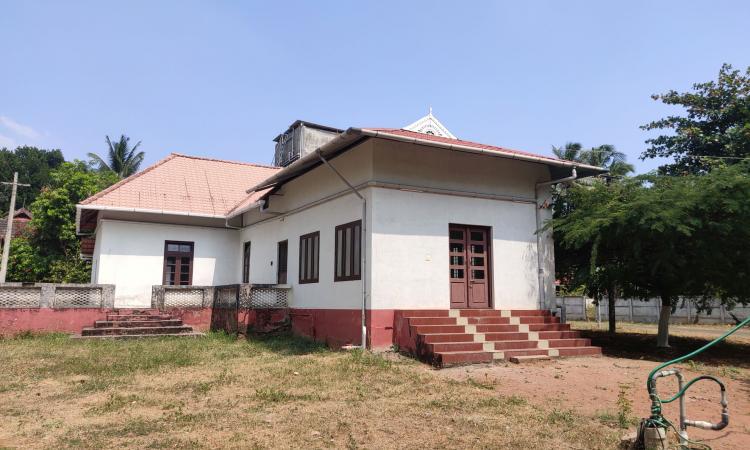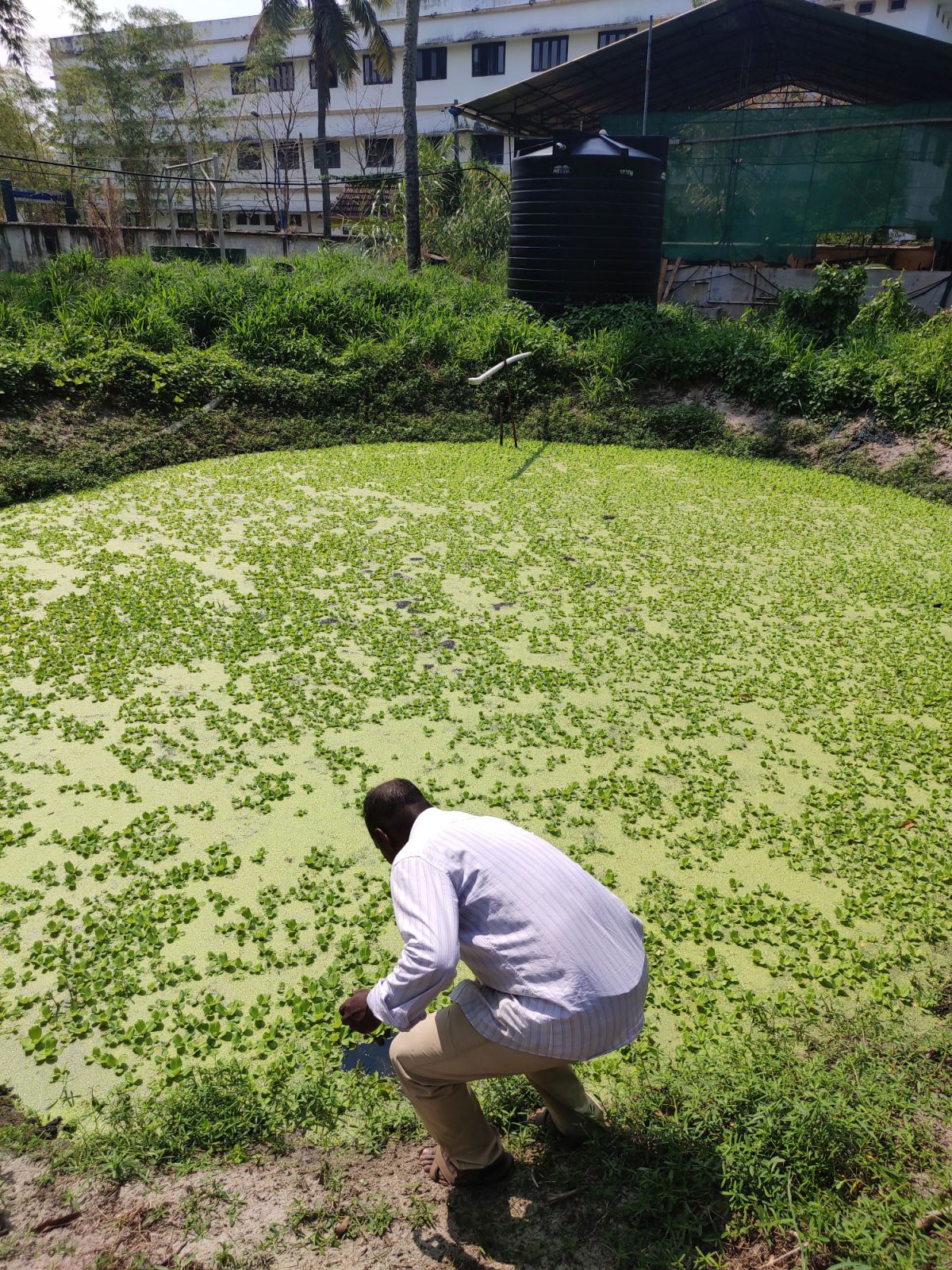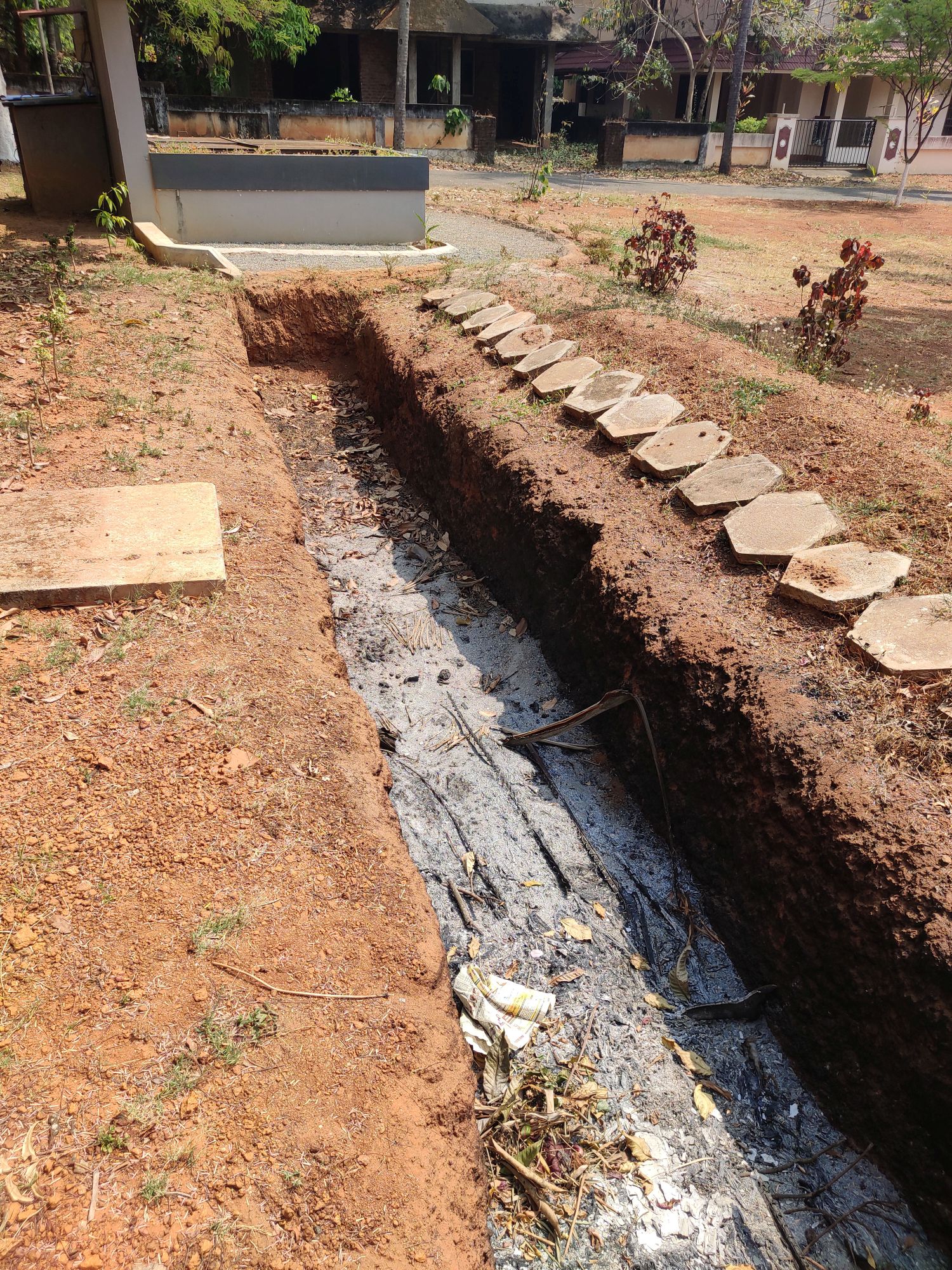
In Kerala, around half the urban population and 80% of the rural population depend on open wells on their domestic water needs. But in the last decade, the majority of observatory wells recorded an average annual decline of half a meter. Groundwater is a common-pool resource that is vulnerable to exploitation, at both individual and community level, and India is its largest extractor. A decline in water level in 54% of India's groundwater wells that could result in a national groundwater crisis was estimated in 2018.
The present system of groundwater management does not enable democratic cooperation between states and the centre for tackling the challenge of overexploitation. In such a context, a decentralised, grassroots level approach to groundwater challenge is essential for equitable, hyperlocal groundwater management.
As part of an ongoing study at the Indian Institute for Human Settlements (IIHS), we visited five locations in Kerala (coastal regions in Ernakulam and hinterlands of Thrissur) in February 2020, to understand the efficacy and differential impact of two grassroots techniques: the Rainwater Syringe Technique developed by KJ Antojy, and the Mazhapolima well recharge programme. Our study collected 10 samples from the sites where the techniques are installed along with a corresponding supporting sample (water sources like wells or ponds located within 200 metres from the site) for each to measure salinity and Total Dissolved Solids (TDS) levels to verify the impact of the technique.
We found that both these techniques which consider local parameters rejuvenate not only the water table and the surrounding environment but also the region’s aquifers, underlying the importance of understanding the local hydrogeological condition to ensure a balance between extraction rates and recharge patterns.
The rainwater syringe technique for deep aquifers

Ramesh (name changed), who manages an orphanage and a care home at Kochi that is located near the backwaters, was facing issues with saline groundwater. They depended on the municipal water supply for drinking and cooking and used water from their well and ponds for irrigating their garden with tamarind trees, mango trees, herbs and seasonal vegetables.
In 2012, they installed the rainwater syringe unit that was developed by K J Antojy in the late 1980s. “Ponds never went dry after this. The iron content has drastically reduced. There is enough water to use for irrigation,” says Ramesh, adding that the vegetation yield of tamarind and seasonal vegetables also almost doubled.

The CGWB Technical Report 2013 highlights that the Vaikom aquifers (coastal sedimentary aquifers which cover most of Ernakulam district) are saline except small pockets of Narakal and Kumbalangi, which have freshwater in the deeper aquifer. The rest of Ernakulam district, covered by Warkalai aquifer, is also completely saline.
The rainwater syringe technique uses a pressurised motor pump or the gravity method to inject rainwater into the deeper aquifers, depending on the dynamics of local aquifers. As a result, the pressurised technique acts not just as a rainwater harvesting unit but can also create a ‘freshwater lens’.

Vishwanath Srikanthaiah, water and rainwater conservation expert from Bengaluru, confirmed that when rainwater gets injected into an aquifer which contains saline water, it neither mixes nor dilutes the saline water, which is usually denser than rainwater. Instead, it creates a new freshwater lens. This is what we observed at Kochi happening with the rainwater syringe unit, where the deeper aquifers became storage spaces for rainwater.
Mazhapolima well recharge for restoring the water table
The district of Thrissur in Kerala has around 4.5 lakh wells, and nearly three-fourths of the state’s population depends on dug well for domestic water needs. Usually, around 70% of the dug wells dry up during summer.
At Orchard Diens, a gated residential community in Thrissur which did not have a municipal water connection since its establishment in 1998, Rani noticed in 2018 that the borewells her household relied on for regular water supply were drying up. Her neighbours were also found to be extracting water through other borewells, and all this overexploitation led to the depletion of the groundwater.
 Facing severe water shortage, they sought the help of the Mazhapolima water recharge programme to establish a regular water source, by directing rainwater from rooftops to household dug wells. A community-level rainwater harvesting structure was installed in 2019 by Mazhapolima technician Ramdas, which captures rainwater from the roof of the clubhouse and diverts it to an open sump through a series of infiltration trenches. The sump water was further used for recharging the open dug well, eventually restoring the shallow aquifers.
Facing severe water shortage, they sought the help of the Mazhapolima water recharge programme to establish a regular water source, by directing rainwater from rooftops to household dug wells. A community-level rainwater harvesting structure was installed in 2019 by Mazhapolima technician Ramdas, which captures rainwater from the roof of the clubhouse and diverts it to an open sump through a series of infiltration trenches. The sump water was further used for recharging the open dug well, eventually restoring the shallow aquifers.
Within a year of installation, our study found that the technique helped restore the shallow aquifers of the region through the recharge of rainwater with a combination of infiltration trenches and an open well.
The results of Mazhapolima projects indicate that the extent of water level fluctuation has drastically reduced in the low and midland areas1. Salinity and TDS levels were found to have reduced through the infiltration of rainwater. We observed that this technique worked even in the geography of crystalline rocks, where the aquifers are inconsistently distributed.
Local context played a key role in how the techniques were developed
Antojy’s Rainwater Syringe technique seemed to work best in coastal areas where households depend on open wells for domestic use. Usually, water in the open dug wells is high in saline content and therefore abandoned. In the study, TDS levels in most of the cases had significantly reduced as compared to its supporting samples. Additionally, though these are samples from coastal areas of Ernakulam, salinity was found to be low in both the study sample and supporting, sample which suggests that the rainwater injection is also affecting neighbouring open wells. The displacement of saline water due to the technique can thus have a long-lasting effect on the region’s water quality.

The Mazhapolima technique worked well in lowland and midland areas, where households could easily direct rainwater to open wells using sand, gravel and charcoal filtering mechanisms. Salinity is already generally low in midland areas of Kerala, and the technique appeared to have a drastic impact on TDS levels, which were lower in the study sample than supporting samples. The technique was found to be cost-effective and most suited to curb the water quality of open dug wells in the households of Thrissur Corporation.

The study reiterated the importance of hyperlocal solutions to the management of groundwater recharging techniques. While the Mazhapolima technique has managed to restore the water table through the recharge of shallow aquifers, Antojy’s technique moves beyond the conventional expectations of rainwater recharge where water is not just diverted but injected to create a permanent reservoir of freshwater in the deep aquifers that are not disturbed by any contaminants.
This approach considers regional parameters that influence not only the surrounding environment but also the very nature of local aquifers. Here, we found that aquifers have the potential to behave as storage tanks that can eliminate the cost of an artificially constructed tank.
The impact that both techniques have in their respective physiography are varied and hence appropriate to their local challenges. For example, as Vishwanath explained, the syringe technique itself can have a different impact (displacement instead of dilution) in other areas based on factors such as homogeneity of aquifers, its behaviour, or dimensions.
We need to move beyond generic solutions
Although groundwater is emerging as a critical issue has managed to encourage new government schemes like Jal Shakti Abhiyan, our study confirms that a generic solution of rainwater recharge cannot be applied across different regions. The current challenge requires localised solutions that resonate with the water demands in the area and physiographic conditions of the site. For example, in the case of Ernakulam water extraction is high from the deeper aquifer, the recharge should then be in the deeper aquifer, after understanding where the stress is. Bangalore is another city with high extraction of water from borewells has caused depletion of the water table, and the city was predicted to be one of the first cities that would run out of water. As Bangalore has a bimodal pattern of rainfall (rainfall received throughout the year), it has a significant potential to capture rainwater, eliminate surface run-off, and promote infiltration to restore the groundwater table in the region.
While the building by-laws of Bangalore mandates rainwater harvesting practices, most of the recharge happens in the shallow aquifers. But there is an imbalance created when people extract water from deep aquifers through borewells, but recharge the shallow aquifers through rainwater harvesting techniques leading to a disconnect between extraction and recharging practices.

This picture illustrates the disconnect between extraction and recharging practices. While the extraction takes places from the deep aquifers, the conventional recharging practices only inject rainwater into the shallow aquifers.
Hence, while there is a pressing need for policy-level interventions to capture surface runoff and promote infiltration, practices that are implemented should simultaneously assess the impact that is made in the respective context. The adoption of the two identified grassroots level solutions and scaling up of the techniques based on the local context can be a few of the many other solutions that can address the national groundwater crisis.
It is evident that individuals can also play a crucial role in understanding the local hydrogeological condition to ensure the balance between extraction rates and recharge patterns. As more people take up such responsibility at the grassroots level, these decentralised approaches can ensure that the practices correspond to the needs of the people and the sustainability of the environment.
Authors
Abhinav Madhavanunni, Research Associate at the Indian Institute for Human Settlements
Sairama Raju Marella, Senior Associate at the Indian Institute for Human Settlements
References
1. Centre for Water Resources Development and Management, Kerala, Impact Assessment of Mazhapolima Project on Groundwater Regime in Thrissur District, 2013
/articles/groundwater-recharge-needs-grassroots-solutions-study-two-techniques-kerala